We’ve had so many questions about the difference between the Scroop + Virgils Fine Goods Augusta Stays and the Scroop + Virgil’s Fine Goods Cassandra Stays that I’m bumping the planned blog post about that up the queue and answering it before I even share the (absolutely amazing!) tester makes.
Although the Augusta and Cassandra Stays are both 18th century stays, they are quite different patterns. Here’s how, and which you should choose depending on what you want as a costumer!
(pssst, don’t forget that the Cassandra Stays are 15% off until Thur 22 Feb, midnight NZDT)
Silhouette & Date – the difference between the two styles
The Augusta Stays are based on extant stays & stay patterns dating to between 1775 and 1789, such as this pair:
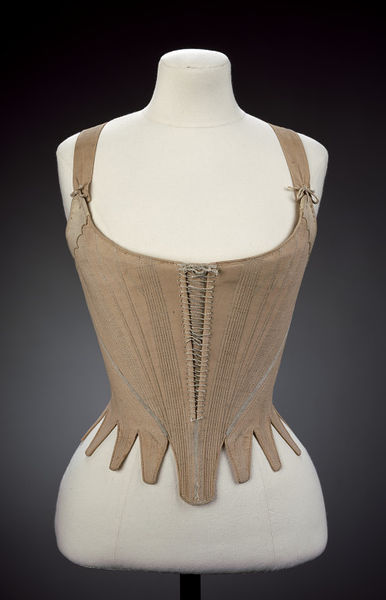
Stays, Great Britain, 1780-1789, Linen, hand sewn with linen thread, applied ribbon, chamois and whalebone, VAM T.172-1914
(learn more about the extant stays that inspired the Augusta pattern here)
Stays of this style are fairly short-waisted, with partial front lacing which makes the bust fit adjustable. The goal of these stays was to create a short, curvaceous silhouette, with a ‘prow front’ that thrust the bust forward like this: )
See how Amber’s torso curves out slightly in her Augusta Stays:

Obviously the bustier you are (or the more you are willing to pad that area!) the easier it is to achieve the fashionable prow front!
The Cassandra Stays, on the other hand, are based on extant stays and patterns from between 1760 and 1780, such as this pair:
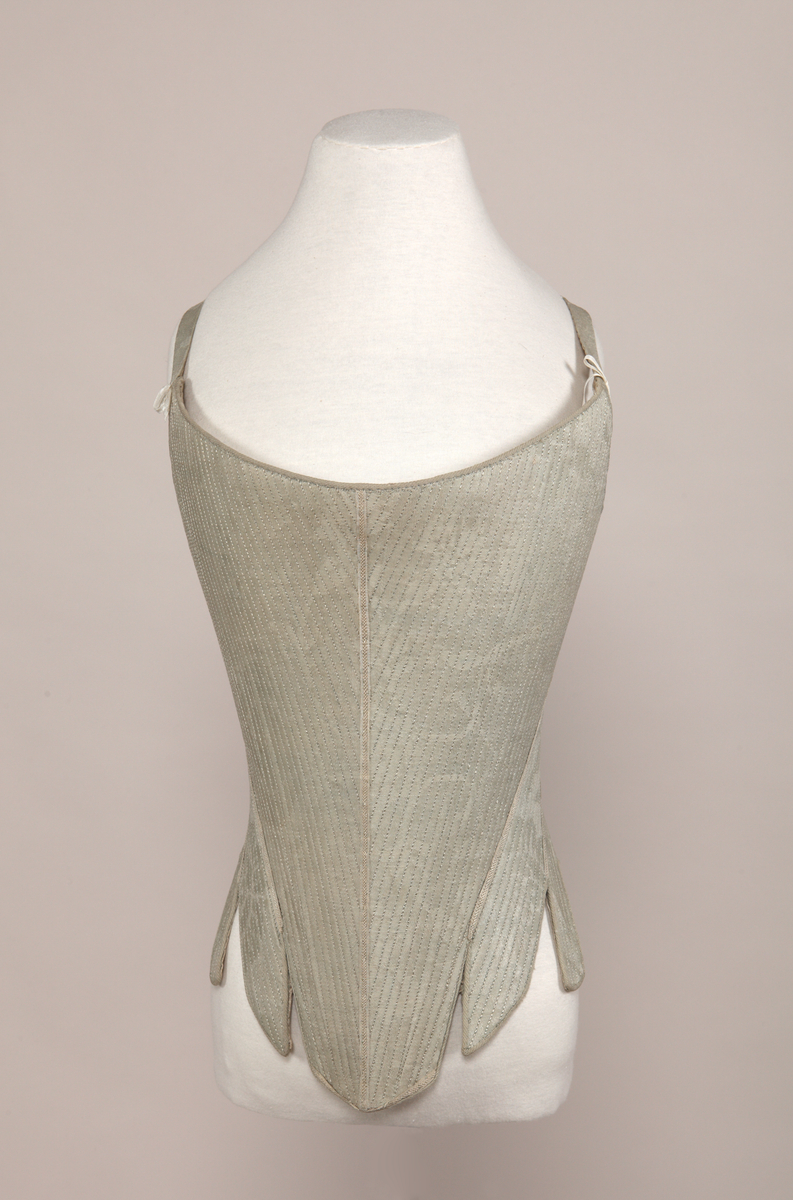
Pale blue glazed woollen damask over stiff foundation, lined with white linen. Bound with pale blue twilled wool, 1947.1622 Manchester Art Gallery
And this pair:
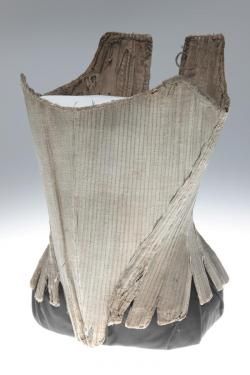
Missouri Historical Society Canvas stays (corset) stiffened with paste. (1775)
And this pair:
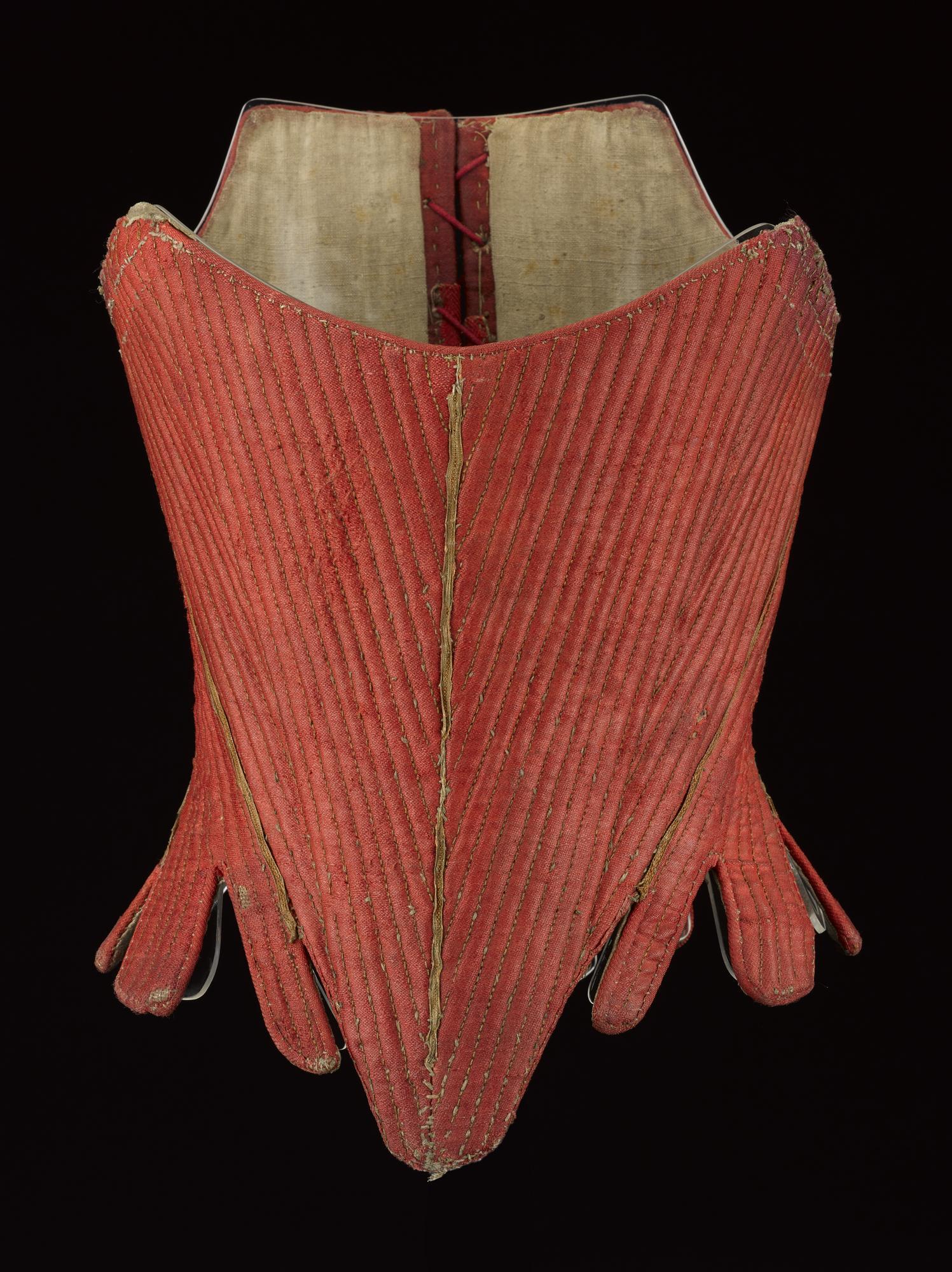
Stays, National Museum Scotland, Linen & Cane, 1765-75 A.1905.983
The goal of this style of stays was to create an elongated, conical torso with a front silhouette that angle out smoothly, like so: \. They often used a curved bust rail to create a rounded front to the top of the bust, rather than a flat front.
You’ll notice that there is a 5-year overlap with the 1760-1780 Cassandra Stays, and the 1775-1789 Augusta Stays. That’s because fashions rarely end abruptly: instead, they transition from one to the next. So between 1775-1780 it would have been common to see fashionable women wearing either styles of stays. Women who couldn’t afford new stays, or preferred earlier styles, might have continued to wear the Cassandra style up until the end of the 18th century.
While both the Cassandra Stays and the Augusta Stays have specific date ranges, we have been conservative in our dating, particularly for the Cassandra Stays. There are numerous examples of stays that are dated to earlier than 1760 which have similar pattern pieces and boning layouts to the Cassandra Stays, such as these two examples:

Corset (Stays), 1740–60, American, linen, leather, whalebone, Brooklyn Museum Costume Collection at The Metropolitan Museum of Art, Gift of the Jason and Peggy Westerfield Collection, 1969, 2009.300.3330a–d
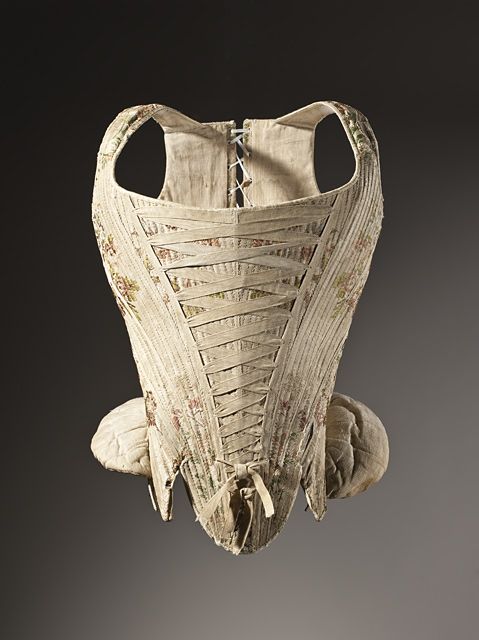
Woman’s Corset (stays), France, circa 1730-1740, Silk plain weave with supplementary weft-float patterning
However, as we were not able to examine any of the stays we found with earlier dates in person to determine if they were correctly dated, and to see how closely their pattern and construction matched the Cassandra, we stuck to 1760-1780 as a date range. The Cassandra Stays could definitely create an entirely plausible silhouette for 1730-60 costuming, particularly if worn without the bust rail, so they have a flatter front.
The Augustas can be worn for later 1790s looks if you are not aiming for an extremely fashionable silhouette. While they wouldn’t be entirely accurate for earlier decades, if, for example, you were travelling with limited luggage and could only take one pair of stays the Augusta’s would look OK to all but the most experienced historical costumer eye under costumes from 1740-1775 if you wear them with a busk slipped down the front.
Boning & Boning Layouts
The Augusta and Cassandra stays use different types of boning, and have distinctly different boning layouts.
The Augusta Stays are half-boned, meaning that there are spaces between the bones in the stays:
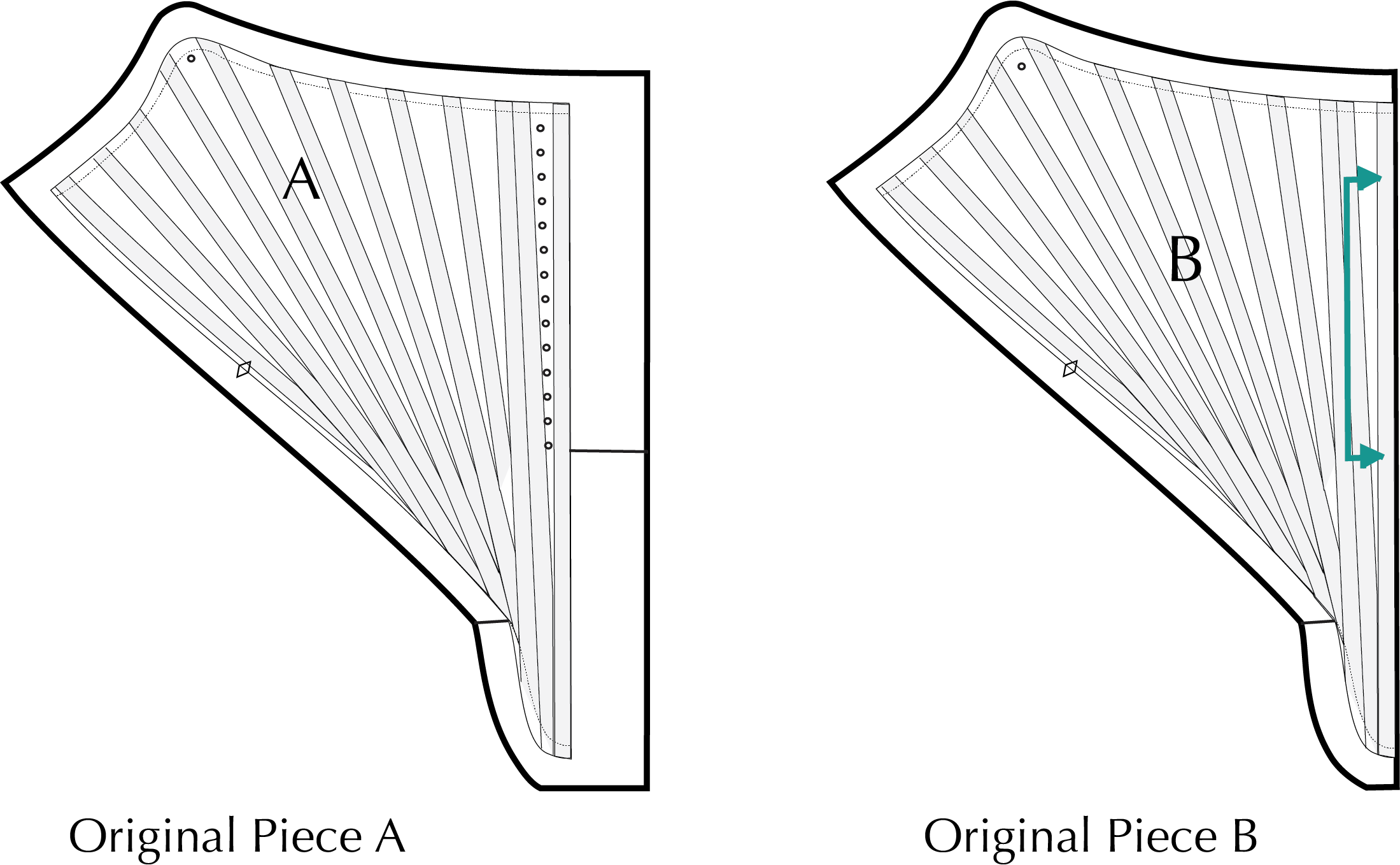
Note how the bones fan out from the bottom point, with increasing gaps between each bone.
In order for the stays to be strong enough to shape you while still having gaps, the Augusta Stays call for 6mm wide bones.
The Cassandra Stays, on the other hand, are fully boned. This means that there are no gaps between the bones in the stays:
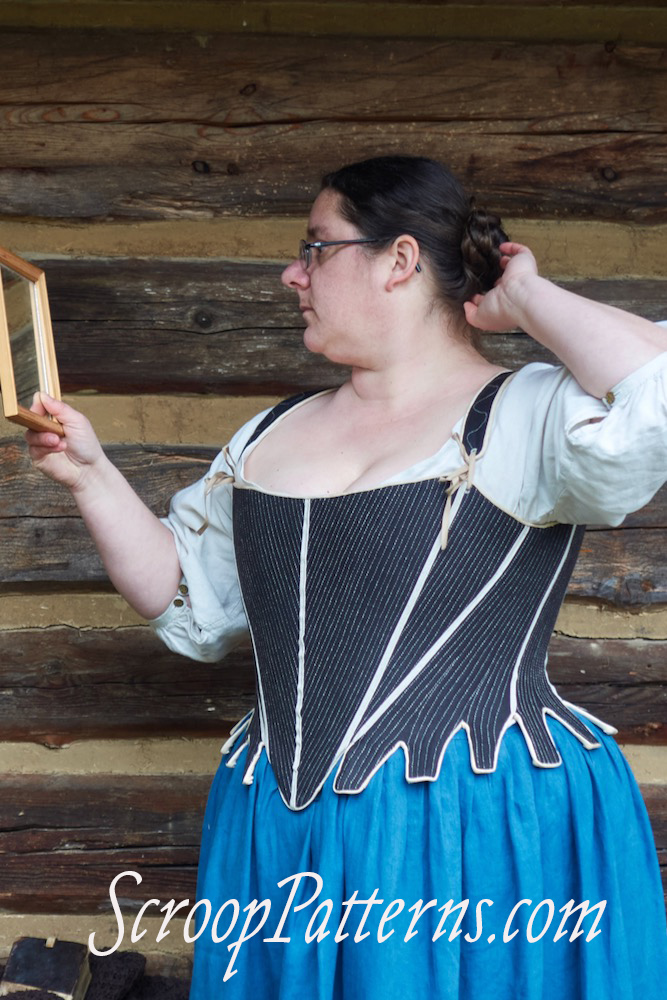
Cassandra Stays by Klara Posekana @klara_posekana
All of the extant stays that we studied to develop the Cassandra pattern had very narrow boning: much narrower than the 6mm wide boning used in the Augusta Stays.
To match this look, we chose the narrowest widely available synthetic whalebone width: 4mm. This width is the closest match to most of the stays we looked at, and really highlights the spectacular V shape of the bones meeting at the front of the stays.
For extra support the pattern calls for wider 6mm boning which frames the lacing holes. Most of the stays we looked at also had a mix of bone widths.
Finally the Cassandra pattern has an optional bust rail: a curved horizontal bone which created the very rounded front fashionable in the 1760s and 1770s. Historically these were usually made of whalebone or metal, but we’ve developed a way to replicate the look in cane. Bust rails were also used in the 1780s, so if you wished you could easily use the bust rail instructions in the Cassandra pattern to add a bust rail to your Augusta Stays.

The interior of Cassandra Stays with bust rail by Rebecca of Duchess of Downs Street
Pattern pieces
The Augusta Stays have four panels (front, side front, side back, back) going around the body on each half of the stays.
When developing the Cassandra Stays Amber studied a couple of pairs of five panel stays as inspiration (front, side front, side, side back, back), and was intrigued by how much the extra panel let you refine the fit of the stays. We also realised that none of the available patterns for stays in this style (including the scale ones in Patterns of Fashion 5, and Stays or a Corset) were five panel stays, so a five panel pattern filled a useful gap in the market.
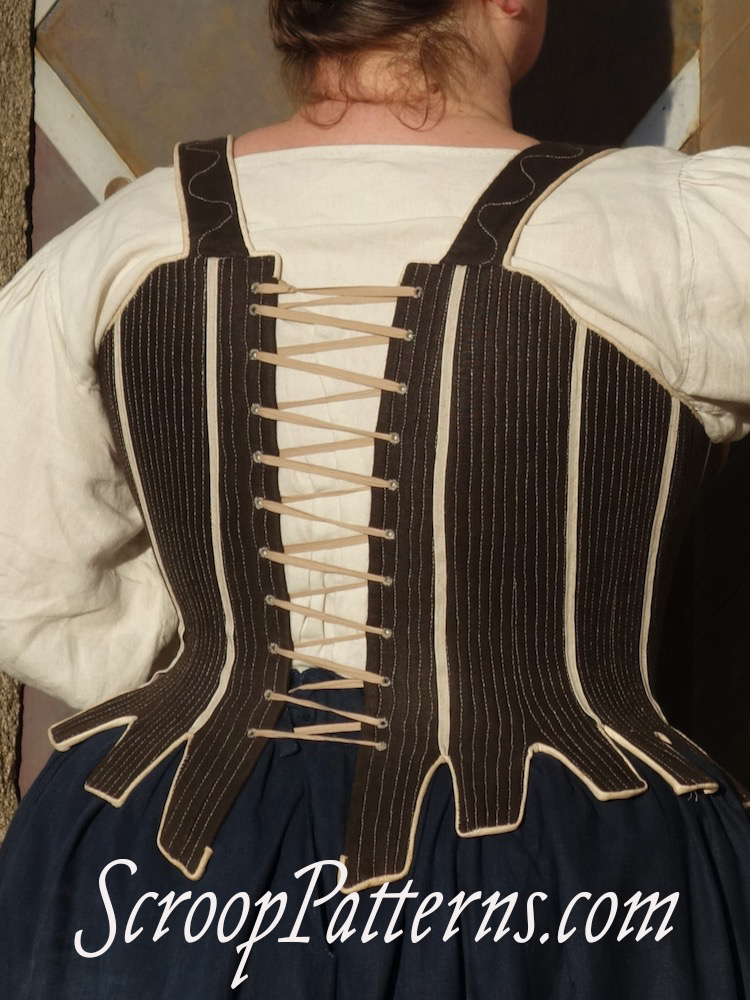
Cassandra Stays by Klara Posekana @klara_posekana Scrooppatterns.com
Centre Fronts & Front Lacing
The Augusta Stays can be made in either the Theatrical Version, with a solid front with no centre front seam, or in the Historical version, with a centre front seam and partial lacing.
The half-lacing on the Historical version adds to the prow front effect, and is adjustable, while the Theatrical version with no centre-front seam gives a straighter silhouette. (and either version can be made even more prow-front-y by following this tutorial for adding more bust space in the Augusta Stays)
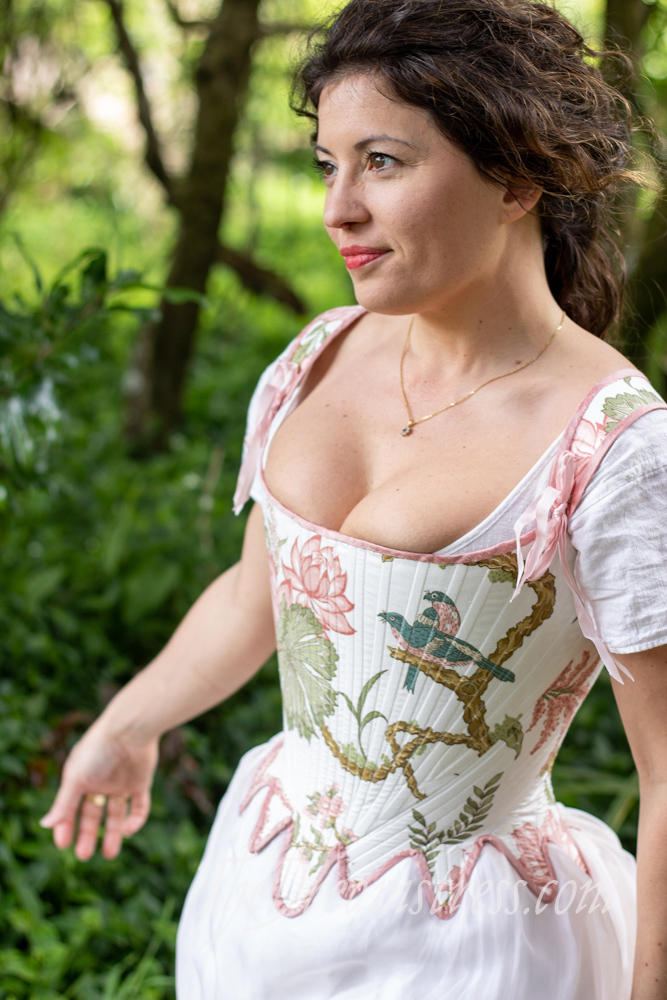
View B ‘Theatrical’ Augusta Stays
The Cassandra Stays, on the other hand, can be made with either a closed front with centre-front seam in the Historical version, or with front lacing and an optional stomacher, in the Theatrical version.
The Fitting and Alterations guide given with the Cassandra Stays includes instructions on adapting the front seam of the stays to achieve different effects.
Front and back lacing on stays of this style is a feature that is infrequently seen in extant stays (although there are a few examples), which is why we have chosen to make it the Theatrical version. It makes for extremely adjustable stays: they can be laced fully closed front and back, slightly open in both, with the front lacing with a wider gap at top and less at the bottom. It’s even possible to create a fit and lace them to give that prow-front effect, as we did in the View B sample photos featuring Jenni (a blog post on exactly how we did that coming soon!)

Binding
There are numerous places in the instructions where we chose slightly different techniques for the Cassandra Stays compared to the Augusta Stays, just so you’d learn new things if you bought both patterns, but the biggest difference is in the binding options.
The Augusta stays include instructions on binding with tape or straight-cut fabric in the Historical instructions or with bias-cut fabric in the Theatrical instructions.
The Cassandra stays include all of those options, AND instructions on binding with leather: a type of binding frequently seen in extant stays, but one which uses a different set of techniques to the other types of binding.
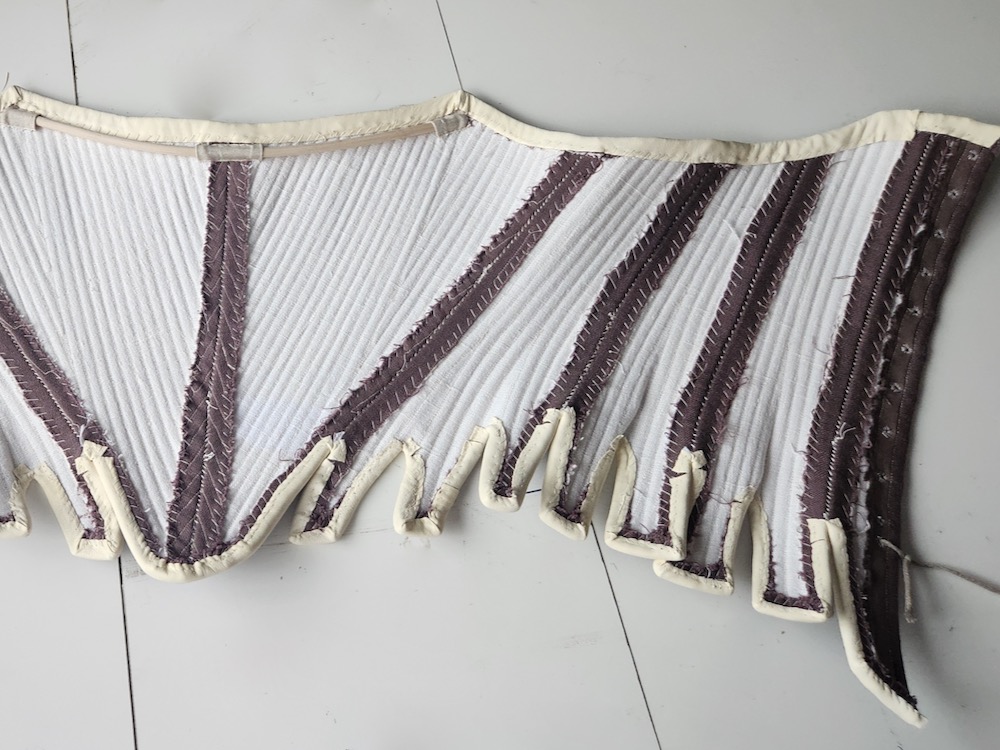
Leather bound stays by Jessica of @scotchirish1775
So, which one should I buy?
Well, obviously we think they are both amazing patterns and you should buy both! But if you’re deciding which one to start with, think about what you want to wear over them.
Do you mostly do pre-1780 costuming? Then go with the Cassandra Stays.
Do you mostly do 1780s & 90s costuming? Go with the Augusta Stays.
Is being able to put on the stays by yourself with minimal wriggling an absolute must? Go with the Cassandra Stays (unless you are confident altering the Augustas to be front lacing, which many costumers have done successfully).
To finish it off, here’s Amber of Virgils Fine Goods in her final unfinished fit test for the Cassandra Stays (red), and Amber in the Augusta Stays.
We’d hoped to have images of Amber in her beautifully finished View A Cassandra Stays, but every time she scheduled a photoshoot nature scheduled a blizzard!
You can see in the images how much longer the Cassandra Stays make the torso appear, how much higher they are in the back, and how much longer the tabs are, for more rounded flare. All of these help create the silhouette that was most fashionable between 1760 and 1780, while the sorter torso of the Augusta Stays is the fashionable look for 1775-1789. As always, there’s an overlap in fashion as ideals transition from one look to the next.


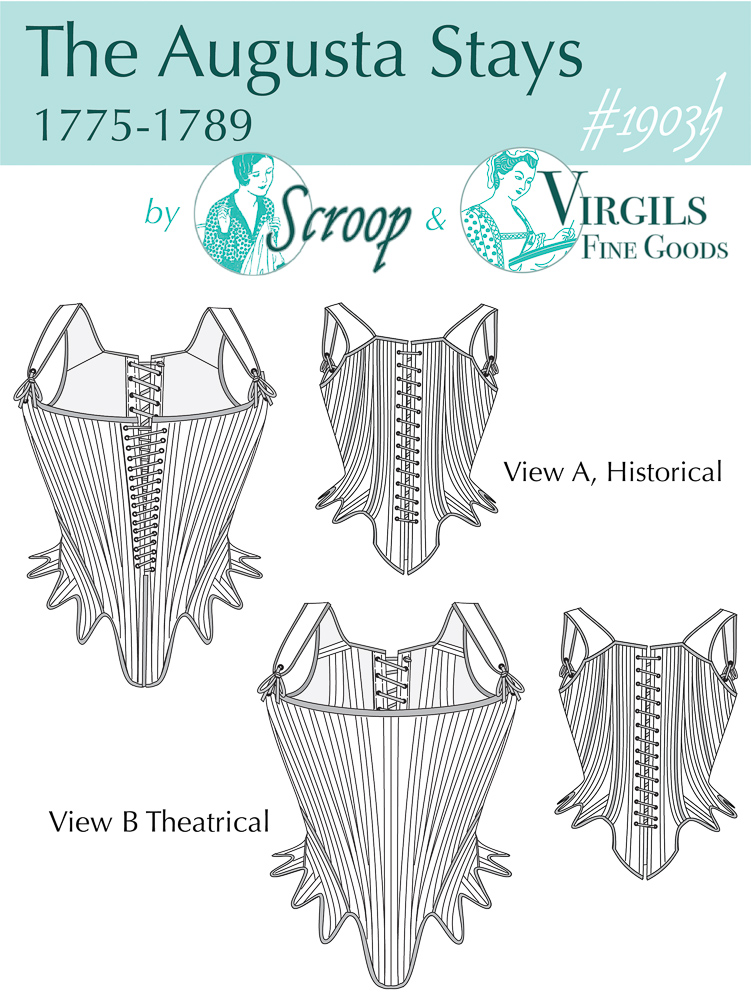
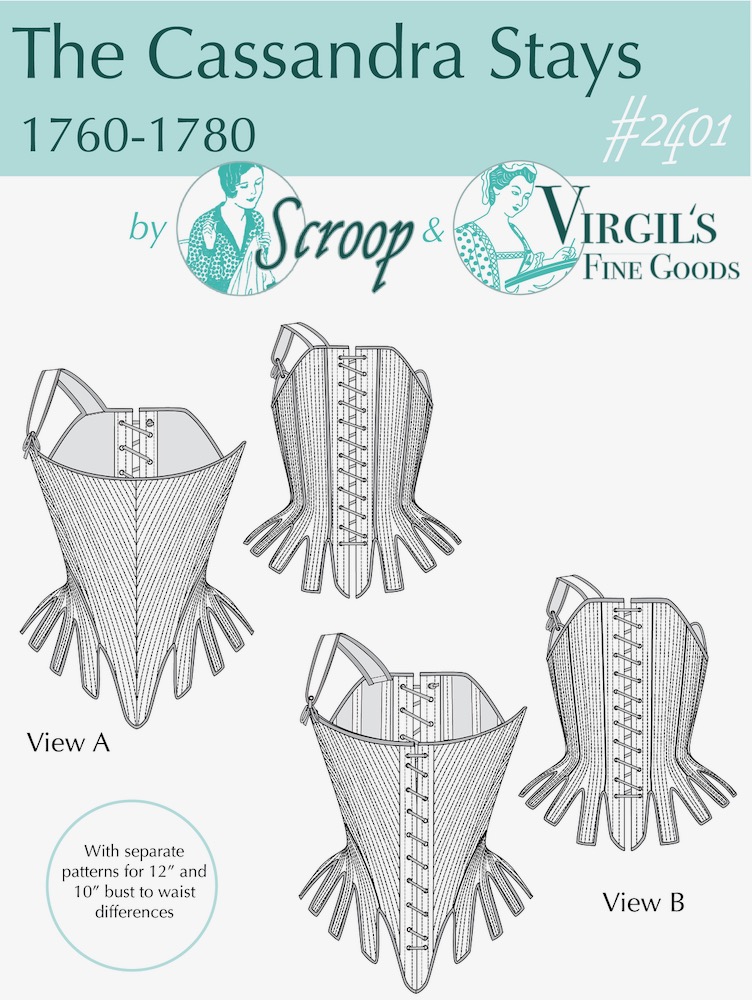
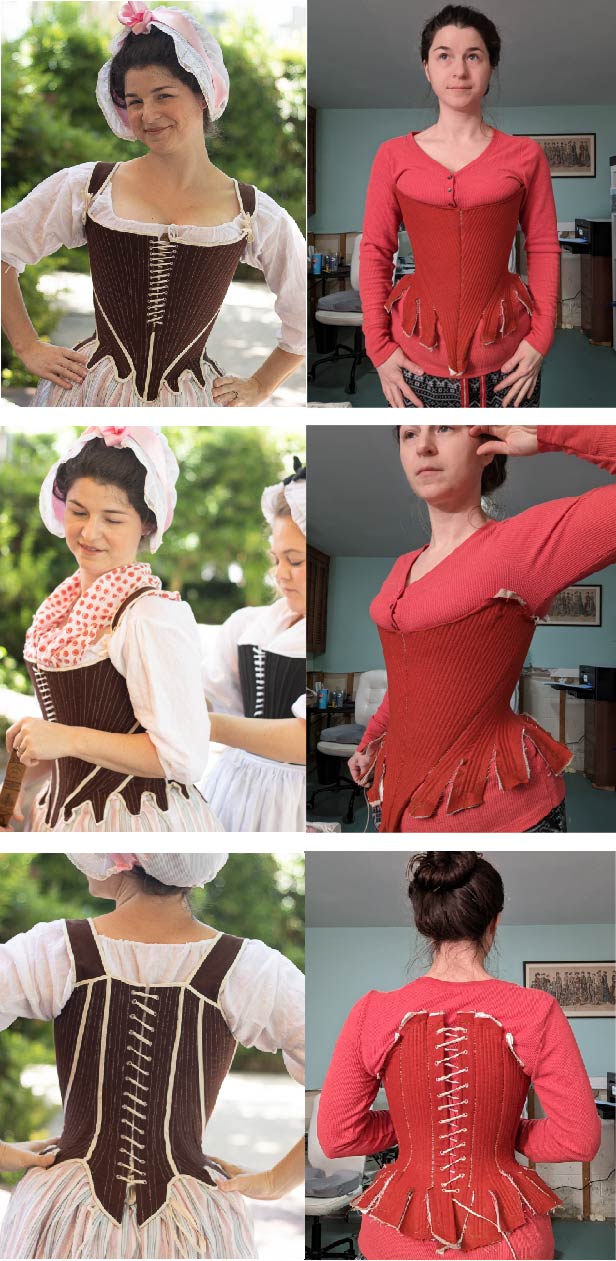
Fascinating and beautiful! Makes me wish I was still The Little Engine Who Could!